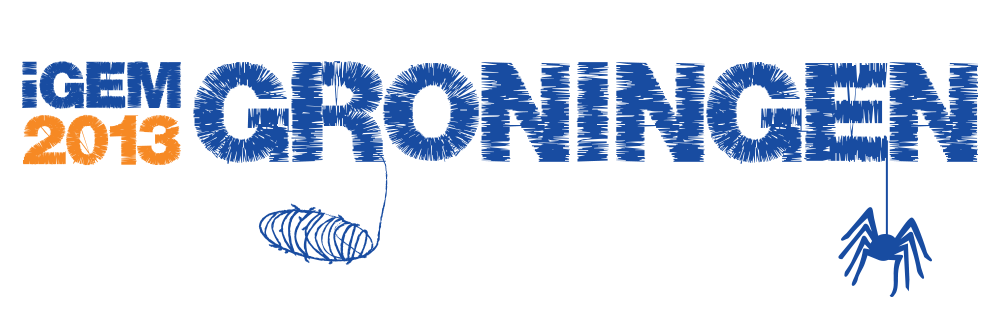Team:Groningen
From 2013.igem.org
| Line 26: | Line 26: | ||
| | | | ||
<h1>University of Groningen</h1> | <h1>University of Groningen</h1> | ||
| - | <p> | + | <p>Welcome to the website of the 2013 iGEM team from Groningen! This year our team consists of twelve under- and postgraduate students from a wide range of disciplines; Chemistry, Biomedical Engineering, Physics, Computing Science, Industrial Engineering, Bio-informatics, and ofcourse Biology. We have a highly versatile group with many different interests, which will hopefully provide us with different perspectives on the problems to be solved. |
</p> | </p> | ||
<h2>Silk secretion by ''Bacillus subtilis''</h2> | <h2>Silk secretion by ''Bacillus subtilis''</h2> | ||
| - | <p> | + | <p> This year we will pick up where the 2012 iGEM team from Utah left off. Utah managed to successfully produce spider silk proteins in “E.Coli”, after which the bacteria was lysated to purify the silk proteins and achieve polymerization. |
| + | Our goal is to use these Utah's biobricks to create a silk biofilm without having to destroy the bacteria. In order to achieve this, we need to secrete the silk proteins, for which we will use the 'Sec pathway' in Bacillus Subtilis. This micro-organism is more suitable for biofilm formation than E.Coli due to it's capability of adhering to certain surfaces. | ||
| + | |||
</p> | </p> | ||
|- | |- | ||
| | | | ||
Revision as of 18:51, 4 June 2013
| Home | Team | Official Team Profile | Project | Parts Submitted to the Registry | Modeling | Notebook | Safety | Attributions | TESTPAGE |
|---|
University of GroningenWelcome to the website of the 2013 iGEM team from Groningen! This year our team consists of twelve under- and postgraduate students from a wide range of disciplines; Chemistry, Biomedical Engineering, Physics, Computing Science, Industrial Engineering, Bio-informatics, and ofcourse Biology. We have a highly versatile group with many different interests, which will hopefully provide us with different perspectives on the problems to be solved. Silk secretion by Bacillus subtilisThis year we will pick up where the 2012 iGEM team from Utah left off. Utah managed to successfully produce spider silk proteins in “E.Coli”, after which the bacteria was lysated to purify the silk proteins and achieve polymerization. Our goal is to use these Utah's biobricks to create a silk biofilm without having to destroy the bacteria. In order to achieve this, we need to secrete the silk proteins, for which we will use the 'Sec pathway' in Bacillus Subtilis. This micro-organism is more suitable for biofilm formation than E.Coli due to it's capability of adhering to certain surfaces. |
 "
"
